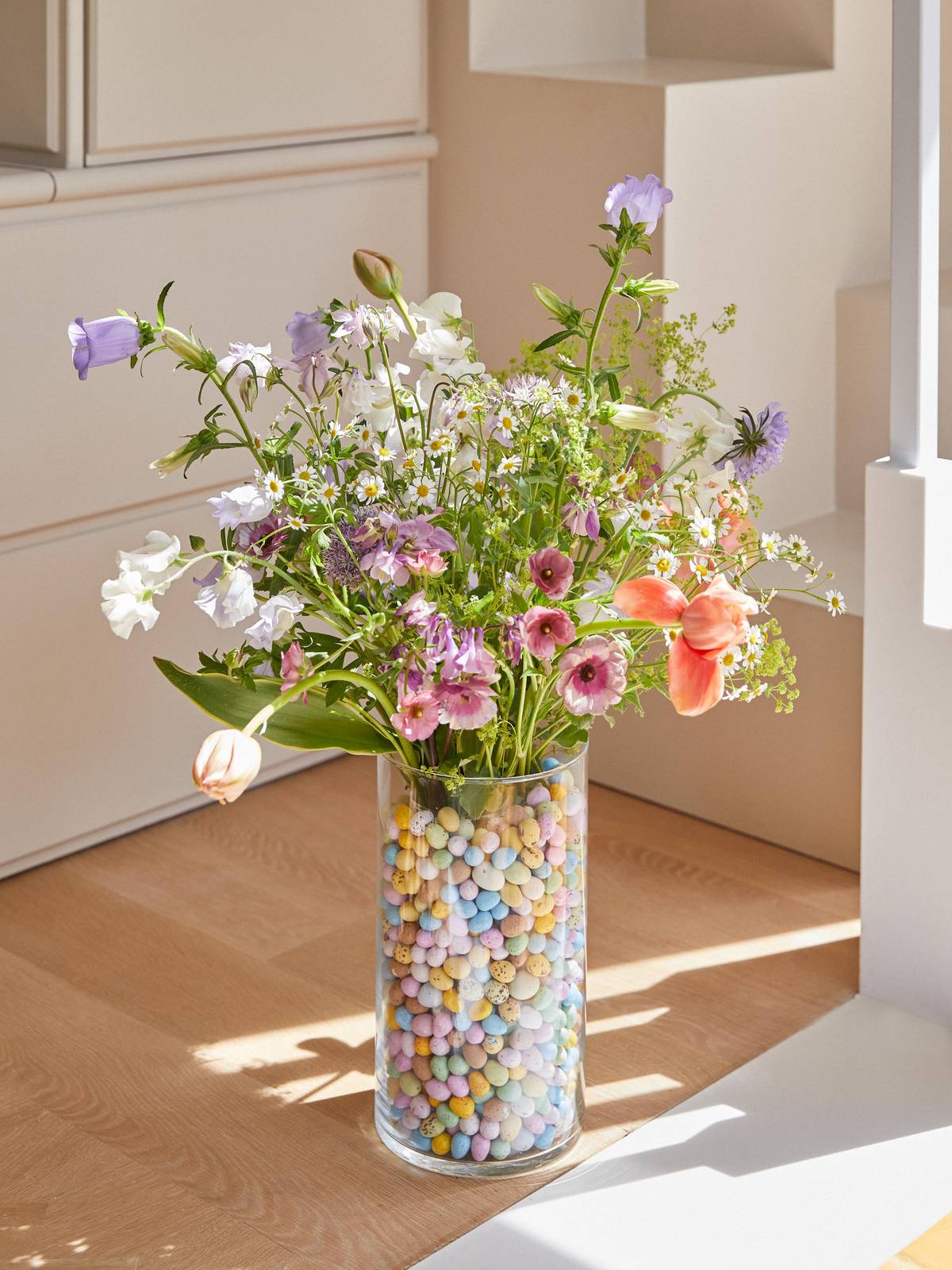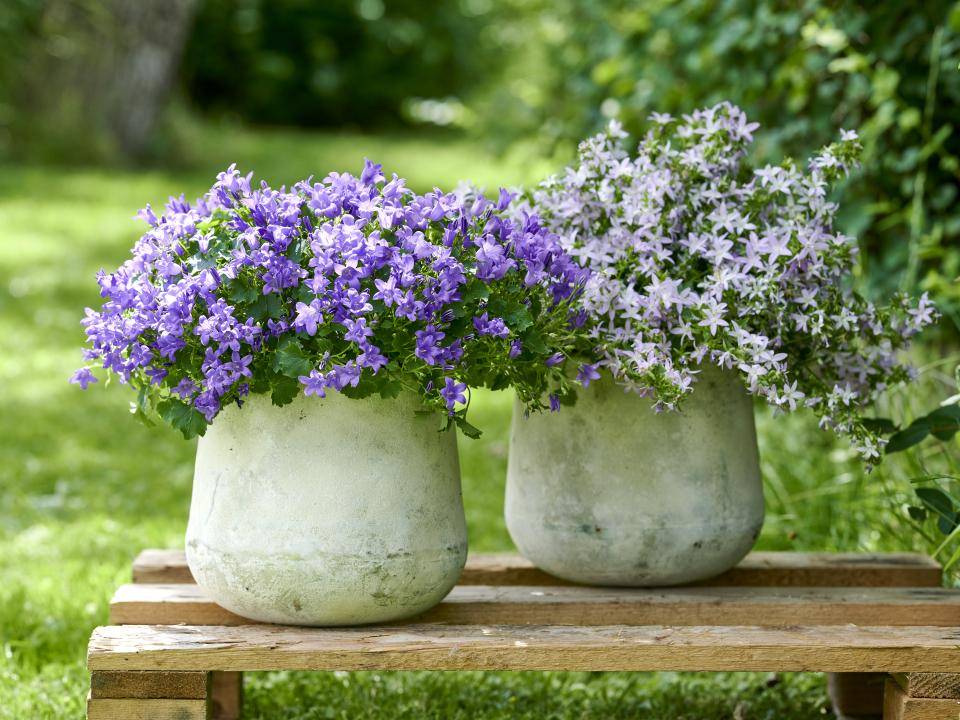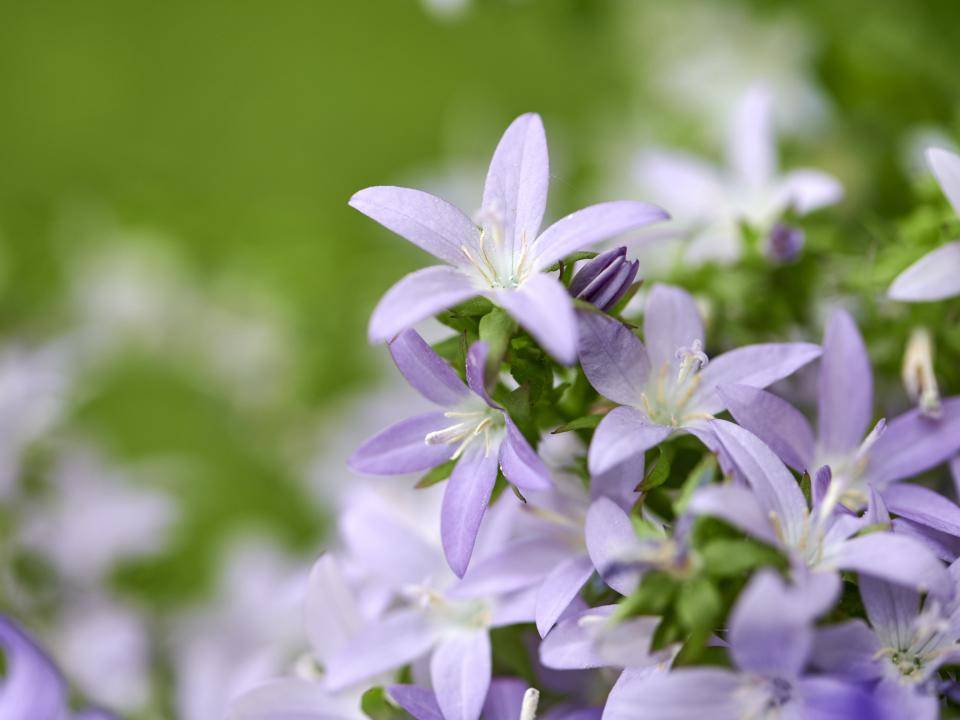
Campanula

Campanula
Campanula bells are usually purple in colour, but they can also be white, pink or blue-purple. Some species have flowers with a distinct bell shape, while others have a more star-shaped flower. Campanula performs well as a creeper and border plant and, depending on the variety, shines just as brightly in pots or as cut flowers in your vase. It's an easy-to-care-for, low maintenance plant.
Campanula belongs to the large campanula family (Campanulaceae). This family includes annuals and biennials, but most species are perennial, hardy plants. This means that most species reward you with their floral splendour for years and are able to survive periods of severe frost.
Originally, Campanula is a mountain plant, so it does very well growing amongst stones or along a wall. Campanula is a true summer bloomer, usually flowering between June and September. With proper care, Campanula flowers as many as 2-3 times a year. Bees and butterflies also love Campanula's blooms, so this cheerful plant is also good for biodiversity.
With over 300 different varieties, Campanula offers a wide choice of shapes, colours, heights and flowering periods. Whether you are looking for a bellflower for your border, as ground cover or as a hanging plant: there is a variety suitable for everyone! These are the most well-known varieties of Campanula:
Are you sowing or planting Campanula in the open ground or in a pot on your balcony? Check out this step-by-step plan for planting garden plants and tips below on planting, location and caretaking of Campanula:
Do you have a lovely bunch of Campanula in your vase? You'll want it to last for as long as possible, of course. Check our tips below on keeping Campanula beautiful in your vase for as long as possible:

For optimal, healthy growth and flowering, it's necessary to prune Campanula. But what exactly should you do with once the plant is spent in your garden? See our pruning tips below:
Campanula symbolism
Campanula has different symbolic meanings, but in general, the bellflower symbolises gratitude, humility and friendship. The plant owes this symbolism to its visible features. The flower's modesty (in size and shape) is associated with gratitude and humility. Also, the fact that Campanula flowers abundantly, without much maintenance, shows that it is a grateful flower. Campanula often grows in dense clusters and spreads easily, which is seen as a symbol of connection and friendship.
Did you know that the fairy tale Rapunzel by the Brothers Grimm, is named after the edible rapunzel bell (aka Campanula Rapunculus)? Various bees are also named after the Campanula. These include the bell sand bee, small bell bee and the large bell bee.
Campanula has many different species with different origins, but is mainly found in the temperate regions of the northern hemisphere. The most likely original species, Campanula Carpatica, comes from the Carpathian Mountains in Eastern Europe. Other species, such as Campanula Portenschlagiana, come from Croatia. In addition, several species of Campanula occur naturally in grassy, rocky, and mountainous areas in other parts of Europe and Asia.

No, Campanula is not toxic to humans and animals, including dogs and cats. However, caution is advised when people or animals have eaten large quantities of the plant as they can develop stomach complaints. In this case, consult a doctor or vet.
A number of Campanula species, such as Campanula Rapunculus and Campanula Punctata, have edible roots or petals. There is no strong flavour to the edible species of Campanula, but they can be used as a garnish or candied, such as in salads. Campanula has a sweet, mild, radish-like flavour.